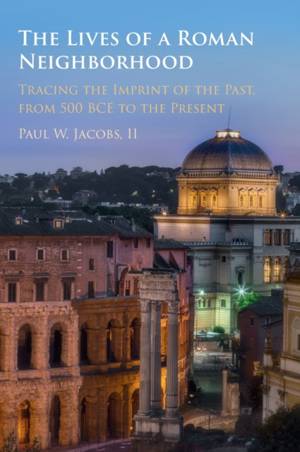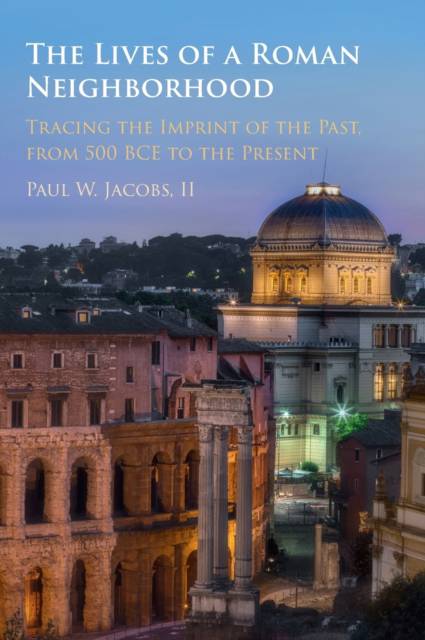
- Afhalen na 1 uur in een winkel met voorraad
- Gratis thuislevering in België vanaf € 30
- Ruim aanbod met 7 miljoen producten
- Afhalen na 1 uur in een winkel met voorraad
- Gratis thuislevering in België vanaf € 30
- Ruim aanbod met 7 miljoen producten
Zoeken
The Lives of a Roman Neighborhood
Tracing the Imprint of the Past, from 500 BCE to the Present
Paul Jacobs
Hardcover | Engels
€ 144,45
+ 288 punten
Omschrijving
In this book, Paul Jacobs traces the history of a neighborhood situated in the heart of Rome over twenty-five centuries. Here, he considers how topography and location influenced its long urban development. During antiquity, the forty-plus acre, flood-prone site on the Tiber's edge was transformed from a meadow near a crossroads into the imperial Circus Flaminius, with its temples, colonnades, and a massive theater. Later, it evolved into a bustling medieval and early modern residential and commercial district known as the Sant'Angelo rione. Subsequently, the neighborhood enclosed Rome's Ghetto. Today, it features an archaeological park and tourist venues, and it is still the heart of Rome's Jewish community. Jacobs' study explores the impact of physical alterations on the memory of lost topographical features. He also posits how earlier development may be imprinted upon the landscape, or preserved to influence future changes.
Specificaties
Betrokkenen
- Auteur(s):
- Uitgeverij:
Inhoud
- Aantal bladzijden:
- 256
- Taal:
- Engels
Eigenschappen
- Productcode (EAN):
- 9781316512630
- Verschijningsdatum:
- 2/02/2023
- Uitvoering:
- Hardcover
- Formaat:
- Genaaid
- Afmetingen:
- 170 mm x 250 mm
- Gewicht:
- 725 g

Alleen bij Standaard Boekhandel
+ 288 punten op je klantenkaart van Standaard Boekhandel
Beoordelingen
We publiceren alleen reviews die voldoen aan de voorwaarden voor reviews. Bekijk onze voorwaarden voor reviews.











